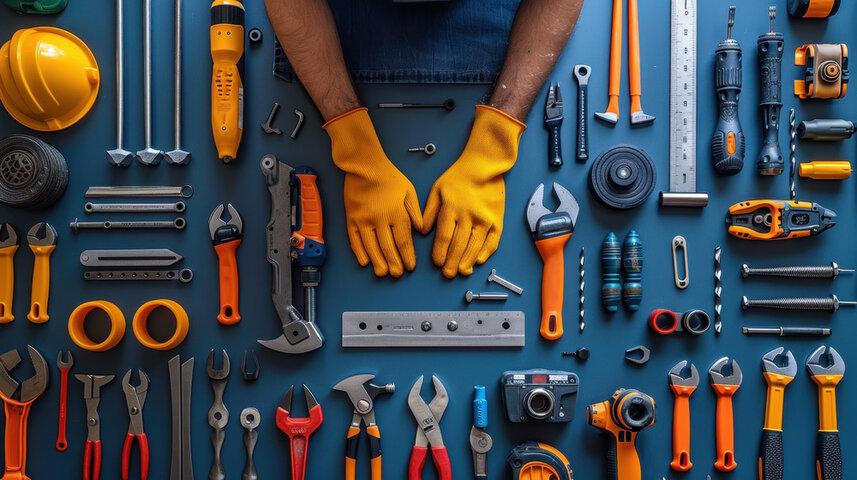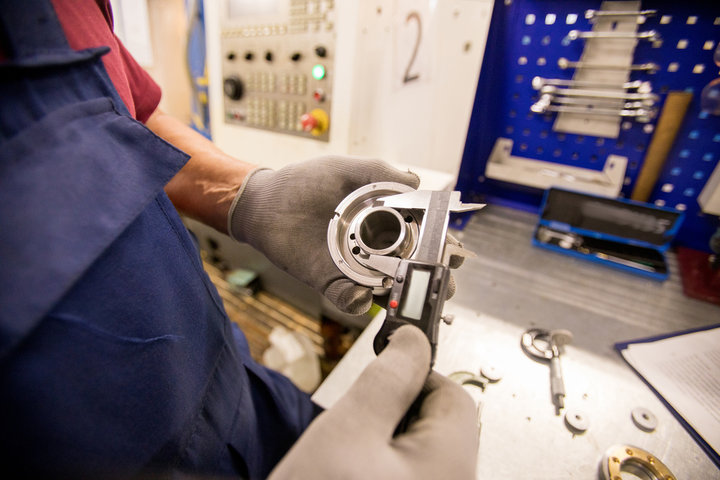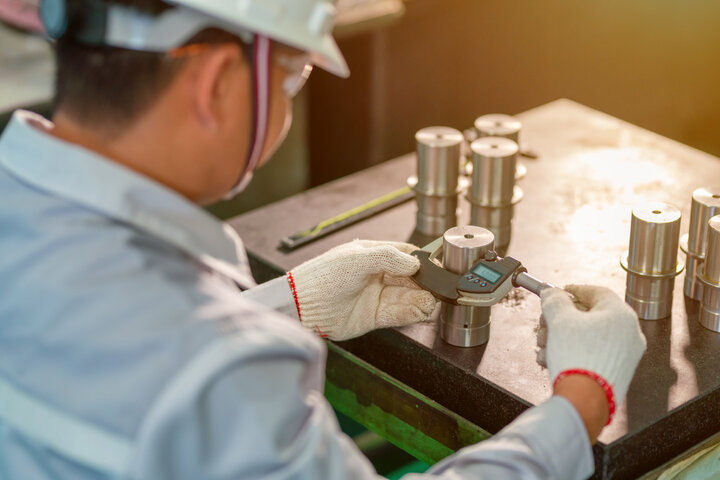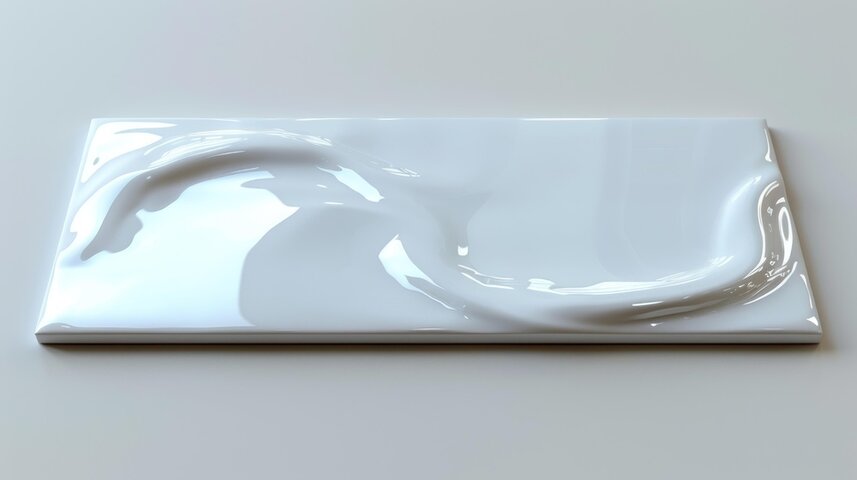Injection molding is one of the primary methods of manufacturing. To achieve the best results and efficiency from the process, an injection molding workbench kit must be readily available. With the right injection mold tool kit, the entire process of molding is simplified right from the maintenance of the mold to the inspection of its parts.
This blog will guide you step by step on the injection molding workbench kit and its components, how to select the right injection molding machines kits, and an overview of the best strategies on how to prepare a blog post.

What is an Injection Molding Workbench Kit?
Definition and purpose of an injection molding workbench kit
An injection molding workbench kit is a set of specially picked components, devices, and additional equipment aimed at aiding injection molding technologists and engineers in their everyday activities. The main objective of these kits is to avoid wastage of time during operations such as the maintenance, repair, and quality checks of the injection molds made using these kits. This is done to make sure that excellent quality injection molded components are produced.

Key components of a typical injection molding toolkit
A well-equipped injection molding workbench kit typically includes the following components:
Tools for measuring dimensions, for example, calipers, micrometers, depth gauges, among other tools
Tools used in cleaning molds include brass scrubbers, soft brushes and mold release agents used to prevent any build up
Tools supporting polishing of molds such as polishing paste, abrasive pads, and buffing wheels used in refurbishing molds depleted of their shine
Tools used for fitting or removing molds which comprise of fitting or removing sytem of socket sets, molded hex keys and disposable mold part removers
Apparatus that is used to check and or test for leakage mold such as an ultrasonic detector or a unit that performs pressure decay tests.
Hand held lenses and inspection mirrors to make visual inspection of the surfaces of molds and other inaccessible areas with high efficiency.
Process control and troubleshooting instruments such as temperature and pressure monitoring and diagnostics sensors placed inside molds during production process.
The role of a workbench kit in maintaining injection molds and ensuring product quality
The use of the injection molding workbench kit is necessary not only for the steady state of injected molds but also for the uninterrupted production of quality parts. Introducing the kits to provide the necessary tools and supplies to technicians will enable:
Mold maintenance: Essential tools such as cleaning and polishing equipment, and inspection devices for mold surfaces allow technicians to maintain molds in a good working condition by preventing the buildup of dirt, moisture, corrosion, and even damage which could cause defects in the parts being molded or failures of the molds.
Easy repair in case of any faults: understanding the use of leak detecting equipment and monitoring and inspection tools, problems which may compromise the quality of parts or the working of the molds inclusive of any repairs become easily resolved by the technicians.
Simple and fast repairs: tools for fixing and separating mold assemblies for instance machine elements are used to replaces or repair machine components reducing repair duration enabling timely production.
Control over the quality: purpose built tools for measurements and product inspection help in checking dimensions, finish, and overall quality of molded products thereby confirming their conformity to given specifications.
Essential Tools for an Injection Molding Workbench Kit
A benchtop injection molding unit must have a kit that is to drone into the molding process a well-balanced. The following essential cleaning tools and materials - including, but nLimited to, mold release agents, cleaning brushes and scrapers, and air compressors – help in ensuring proper molding conditions and uniformity in the production of parts, respectively.
Mold Cleaning Tools
Mold Release Agents for Easy Part Removal
Mold release agents are used to ensure that the parts being molded do not stick to the mold cavities. This is done by coating the surface of the mold and the plastic in almost the same temperature as the cavity. When parts are completed, it is easy to release them from the mold thanks to the line of demarcation created by the coating. Rigorously implementing the use of mold release agents helps to achieve shorter cycle times, reduces the number of defective parts produced, and increases the useful life of the injection molding tools.
Cleaning Brushes and Scrapers for Mold Maintenance
Cleaning brushes and scrapers are necessary tools for cutting off the debris and the excess plastic left inside the mold cavities. Using these tools to clean the injection molds on a regular basis prevents the roughening of the internal surfaces of the molds, improves consistency of the final parts produced and prevents damage to the molds. It is advisable that the brushes and the scrapers be made of non-scratching materials, in order to protect the fragile surfaces of the mold from any form of damage.
Air Compressors for Cleaning Injection Molds
Air compressors make it much easier to do cleaning work in areas within the injection molds that are hard to reach. They assist in cleaning off dust, dirt, and any other loose matter within different parts of the injection mold whether in the cavities, vents or even cooling channels. When cleaning the molds considering the air pressure provided by the air compressing machine the air pressure should be monitored while cleaning the molds because overcleaning especially on the mold surface would destroy the surface of the mold and also dirt might end up deep inside the mold instead of being blown out
Mold Maintenance Tools
Equipment for the Polishing of Mould surfaces
Mould polishing tools, i.e. polishing stones and pads and diamond paste, are utilized in preserving the surface finish of moulds when injecting molding. In order to attain desired quality of moulding parts, polysilicon works for sending low and modest and ensures that quality and defect free parts are produced within short duration of time. Else, consistent polishing avoids the absorption of any residues, hence increasing the lifespan of the molds.
Rust Prevention Agents to Protect Molds from Corrosion
Being the major components of plastic injection molding equipment, injection molds are highly susceptible to corrosion due to moisture and the presence of aggressive chemicals. Coating agents or protective sprays as types of rust prevention agents, are used to apply a protective film of coating on the surface of the mould so as to protect it from the moisture and other corrosive media. Re-application of these agents on molds surfaces will aid in avoiding rust development on other components in the mold, helping in keeping the mold intact and also prolonging the life of the injection molds.
Lubricants for Moving Parts in the Injection Molding Machine
Moving parts embedded in an injection molding machine, including the ejector pins, slides, and cores, require lubricants to facilitate their motion. It minimizes the effect of wear, reducing the chances of components jamming, and increases the working life of the machine. However, it is always important to employ lubricants that are suitable for the materials and working environment of that injection molding Machine.
Measuring and Inspection Tools
Measurement Tools: Calipers and Micrometers
Calipers and micrometers are instruments that are used to check the size of injection molded plastic parts. Operators can use these devices to verify that the parts are produced within the required limits and detect any defects in shape and size of the parts produced. Measurements play a fundamental role in addressing the issues related to the quality of the part and any possible deviations in the molding tools or molding machine.
Thickness Gauges for Regularizing Wall Thicknesses
Thickness gauges are employed in determining the wall thickness of injection mold parts so as to also achieve design characteristics. Consistent wall thickness is important so that the parts work properly and look good. The operators use these gauges to check the wall thickness from time to time, and therefore they can rectify problems related to the injection molds and machine parameters.
Hardness Testers to Control the Quality of Molding Parts
Hardness test apparatus allows investigation of the plasticity of injected materials in the plywood boards. Such devices increase the possibility of making sure that the parts after manufacture retain the required hardness level for the designed use. Frequent checks of hardness help the operators to monitor and control the adverse effects of changing the material or operating conditions on the performance of the parts.
Safety Equipment for Injection Molding Operators
Gloves and Eyewear Considerations
Injection molding is associated with high temperatures, pressures, and toxic substances in certain cases. It is therefore important to provide protective gloves and goggles to the workers, so that they do not get burnt, cut or splashed with chemicals. Heat-resistant gloves will be used to handle hot molds or parts, safety glasses will be worn when there is a chance of injury to the eyes from dust, pieces of plastics and other materials or when there is molten plastic.
Non-Conductive Tools Employed for the Purpose of Reaching Deep into Hot Injection Molds
Non conductive tools such as pliers, scrapers, and bars are for use with the hot injection molds and their parts. These tools have handles or coating that absorbs heat and protects the user’s hands from heated surfaces. The use of the insulated tools eliminates any chances of burn injuries and gives the operator confidence on handling the hot parts of the injection molding machine.

Benefits of Using an Injection Molding Workbench Kit
A well-equipped workbench kit provides four primary benefits to injection molding processes; these are improved operational efficiency, enhanced mold preservation, dependable quality assurance, and increased safety at work. Let us look into each of the advantages provided in detail.
Enhanced Effectiveness and Output in Injection Molding Processes
A systematic injection molding workbench kit enhances the molding operation by eliminating wastage of time and improving productivity:
All the required items are always within reach and as a result, operators do not waste time looking for tools or other makeshift modifications to accomplish tasks such as cleaning, maintenance and change of molds.
It encourages the operators to use the specific workbench kit for mold maintenance and also for troubleshooting molds as per procedures and checklists.
Such a system reduces the chances of missing any critical maintenance activity which, in turn, ensures higher machine uptime and also lesser instances of unexpected breakdowns.
Improved Preservation and Maintenance of Molds
The injection molding workbench kit with the right set of tools enables the operators to undertake mold maintenance:
Suitable cleaning implements such as brushes, scrapers and air compressors help the operators in clearing away any dirt, remnants and impurities from the inner sections of the molds to deter the accumulation of any material that may cause surface blemishes, deterioration of the molds or affect the quality of the finished parts.
Equipment for mold polishing and anti-rust solutions are essential in ensuring that the mold surfaces are in the best condition possible and that a high gloss surface is sustained for as long as possible on injection molds.
Frequent polishing and rust-proofer application help maintain the molds free from any rust, as a result increasing the useful life of the molds and avoiding expensive replacements.
Better Quality Control and Consistency of Injection Molded Parts
An all-inclusive injection molding workbench kit has measuring and inspecting tools for every stage of part production geared towards higher quality and consistency of parts produced:
Use of calipers, micrometers and wall thickness gauges enables the operators to check the parts dimensions and wall thickness to ensure that they are to the design requirements and that there are close tolerances.
Adherence to this control of such important parameters makes it easier for the operators to spot when these figures go out of limits hence, averting wastage of materials and preserving the quality of the final products.
Workbench kit equipped with necessary hardness testers facilitates assessment of material and parts quality helping in monitoring deviations of material and thermal treatment processes that are likely to deteriorate the components.
Because of these issues, managers can address them proactively by either altering injection molding machine parameter settings or changing the material to be used, so that the already established part quality is not compromised and the end user is still satisfied.
How to Maintain Injection Molding Workbench Kit
To ensure the longevity and effectiveness of your injection molding workbench kit, it is essential to follow proper maintenance practices. This section will guide you through the key aspects of maintaining your injection molding toolkit, including storage, organization, cleaning, and replacement of tools.
Proper Storage and Organization of Injection Molding Tools
An organized system for storing injection molding assembly tools and other such components is extremely vital if the work environment is to sayively bewhere pleats, as no one would appreciate a dangerous and unkempt space for working.-
Use a tool box, drawer, or a peg board to store all the kits to be used on the work station, therefore separating every tool.
It would also be helpful for no hazardous energy source lock out and tagout all the tools in those stores at the end of the shift.
Provide each location with clear identifying markings such as labels, outlined logo stenciling or color codes so that staff can find or keep tools in their position without much struggle.
Also, arrange tools based on their order of usage so that the frequently used tools are easy to retrieve and also the shortest time is used while waiting for the remaining tasks.
Apply check-in/check-out procedures to tools that are shared among many trainees in order to manage ownership, enhance security and shield loss or misplacement of any of the important injection molding gadgets.
Regular Cleaning and Maintenance of Injection Molding Equipment
It is crucial to routinely create a cleaning and maintenance program for the injection molding equipment and tools and execute the same in order to sustain their effectiveness and prolong their usefulness:
Wipe the tools clean after each use without missing any dirt, droplets or foreign object that got attached during the last time they were used for molding. The mold sides cleaning chemicals are provided striations based according to the material type of the tool and/or the products manufactured by the specific tool.
Inspect the tools for wear, deterioration or other such indications on a regular basis, whatever the fractional age of the tool is. In the case of cracks, slice marks and the uselessness of the cutting edges, they shall be corrected straight away in order to safeguard the tools from any further anger and to increase the services out of the tools.
Follow the manufacturer's recommendation in greasing the elements of the moving objects and the objects such as ejector pins or slides so that there is no chipping as a result of over friction and the operations are performed with ease.
Keep the tools in cool, clean place free from rust, out of chemicals and the other harmful agents is received especially for precision measuring instruments like calipers and micrometers.
Replacing Worn or Damaged Injection Mold Tools
Maintenance is still necessary, a fact that cannot be argued. Consequently, it should not come as a surprise when an injection molding tool wears out eventually, if not gets damaged during the molding process. Therefore, finding a replacement for such tools in time is very essential to protect the quality of finished parts and avoid bringing up the closure of production lines.
To facilitate the replacement of molds promptly, establish easy to understand criteria for determining when to replace a mold. This can be: guide time after which quantitative replacement is required; visible damage to the component; spoilage arising during operation; mechanical wear of a specified grade, etc. Minimize confusion regarding used and unused tooling through creation of native part Moves to M Plan. Keep records.
Keep a detailed account of all your injection mold tooling which includes the age, condition, hours of the tool replacement, for the purpose of anticipating the replacement of such tools in the future, to be synchronized with the production schedule other tool replacements
It cannot be overemphasized that great attention has to be paid to tool qualiry and maintenance, especially with regard to the replacing of tools, props and equipment that are located within the rack system.
Equipment use and organizational practices should be reviewed to make sure maintenance is not biased agaisnt particular segments, excluding others. Train the machine team on the right methodology of tool operation thus reigniting life of the new tools yet avoiding their destruction and premature wearing out.
How to Choose Injection Molding Workbench Kit
When considering the purchase of an injection molding kit, operations managers pay attention to a multitude of factors, among which, the following stand out the most: compatibility of the kit with the machines, quality and specifications of the tool, and coverage of components until the end of the operation sequence. Each of these issues has a direct impact on the efficiency and effectiveness of the processes which are being carried out.
Machine Compatibility Assessment
The specification of various injection moulding machines and required access tend to vary not only influencing the choice and dimensions of the tools:
Key points in consideration for this also:
It is important to have the right tool dimensions which would help avoid the use of weird tools which may include the use of another hexallen key or a ratchet spanner and spinner which can be fitted around the ejector or stripper panels, core pull screws or any screw within a very tight space.
For each one of the machines, the shot mold and all additional equipment should be replaced and secured in as short a time as possible.
Verify tool pressure ratings align with your machine's operating parameters, especially for hydraulic and pneumatic components
Often the cleaning equipment supplied may not be applicable to the ventilation and/or conduits system of the molding machine.
Tool Quality and Material Standards
The life span of tools in environments that are tough on the tool depends largely on the material selection and the precision with which the tools are manufactured:
If you plan on using the tools that are under high wear and tear like for example the ejector pin maintenance, the best choice would be that of the use of the steel tools made with the chrome vanadium metals.
Whenever possible, making use of the measuring instruments such as temperature compensation is encouraged for making accurate measurements on the job.
A solution for tools that are often exposed to processing temperatures is to make use of materials that are resistant to heat and corrosion.
You should also check certification and calibration by standard levels specifically for instruments used in precision measurements.
It may be helpful to use anti-slip coatings on apparel in addition to ensuring the handles are in an ergonomic design when tools are to be used in an environment with high temperatures.

Essential Kit Components Evaluation
A comprehensive set for molding must cater to the basic maintenance and control requirements:
Basic maintenance tools: Exhausting accessories, mold clamps and other unique configurations
Devices for quality control: Gauges to control temperature, manometers or flow detectors.
Devices for quality inspection: There are such various surface roughness comparators, thread gauges, and pin gauge sets.
Safety equipments: For example namely those are heat resistant tool handles, Mold processing equipment.
Devices to record information: Among documentation equipment, for instance, digital caliper can measure and save data concerning a product according to quality management plan.
Conclusion
In order for the precise, efficient and safe molding operations, it is necessary that the correct injection molding workbench equipment installation becomes the basis for the rest of operations. The purchase of quality tools is a very wise investment because it allows for the purchase of tools necessary for cleaning, as well as measuring devices. Molding facilities need to acquire the ready-to-use tool boxes with regards to the concerned machines, materials used and replacement parts in order to improve utilization of injection molding machines and prevent premature wear of equipment.
At TEAM MFG, we've spent years optimizing injection molding processes and understand the critical role of proper tooling in production success. Our engineering team can help evaluate your specific molding requirements and recommend appropriate toolkit configurations. Whether you're setting up a new molding operation or upgrading existing equipment, leverage our expertise in plastic injection manufacturing to ensure your toolkit meets both current needs and future growth. Contact us now to discuss your injection molding challenges and explore customized solutions.
FAQs About Injection Molding Tools
What is included in the tools kit which is necessary and important for the injection mold?
In any toolbox you`ll find the necessary halfinch mold release spray,ough frame, casing,parational such as calipers, micrometers,hex key set, torx wrenches,maintenance such as torque wrenches, hex keys, and cleaning like brushes, scrapers, air spray including compressors for using molds safely.
How often should I replace my injection molding tools?
For the most part, with frequent usage most injection molded tools will need replacing in one to two years. On the other hand precision measuring devices may require calibration once every 6 months to 12 months depending on how much and under what kind of climate it has been used.
What are the factors to consider while employing cleaning tools with advanced technology designs and various surfaces mold types?
In occasions where there are machined or high polished molds, better to use soft brush very carefully, knell down bout difficult stains, lasses also known as cleaners shall work towards uplifting the dirt, and for corners, one has to use an air cleaner due to clearance difficulties. Ensure that the material of the cleaning tools is in line with the mold material to avoid deforming the surface of the mold.
What temperature rating should be applicable for the hand tools used in injection molding?
The maximum temperature for hand tools shall not be above 200° C (392° F) in continuous use. Therefore, please consider handled which are insulated and materials which can withstand the processing temperatures.
At What Point Do I Need to Consider My Injection Molding Toolkit for an Upgrade?
Think about doing this when new materials are introduced, production volume rises, or quality suffers. Modern means of digital measurement and specialized tools for maintaining equipment can raise productivity significantly.
Does tool quality have an impact on efficiency of injection mold maintenance?
The work of the average maintenance technician is made more efficient by quality tools since such tools shorten maintenance time and allow close tolerance measurement. Professional tools are also meant to last longer, which helps in averting damages to the mould during maintenance processes.



















